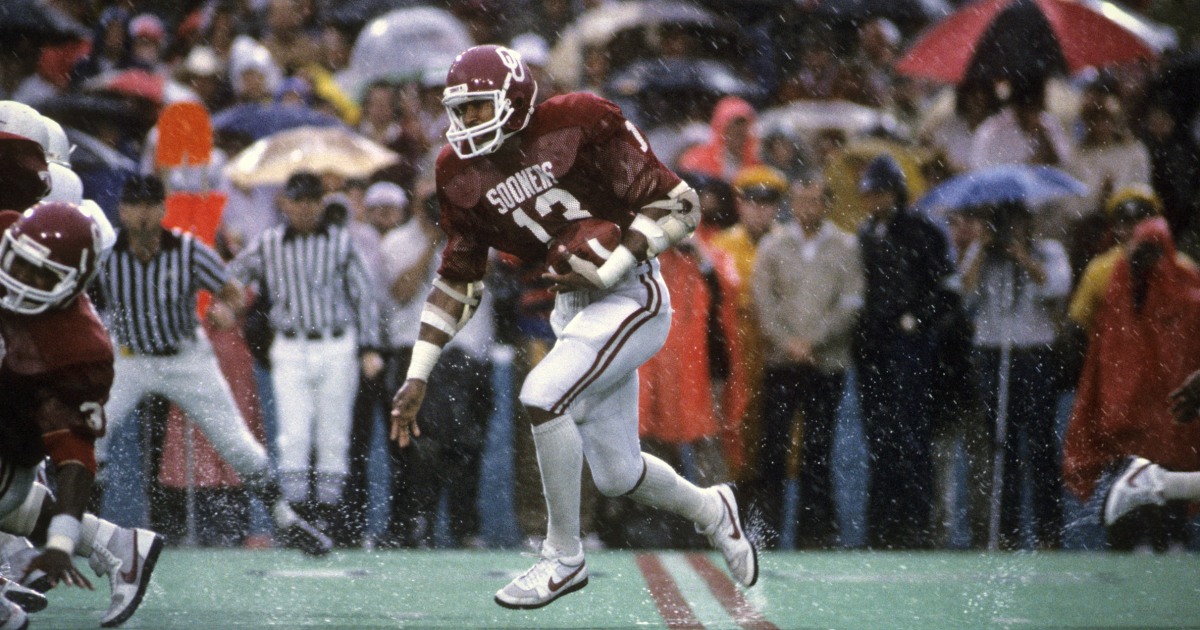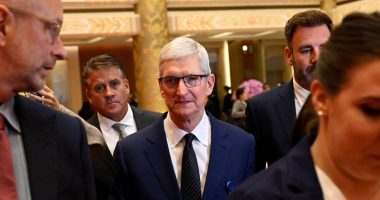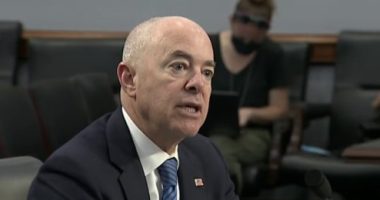
As a century-old college sports conference teeters on the brink of extinction and student-athletes brace for exhaustive cross-country travel, the attorney arguably responsible for these drastic changes says he’s not particularly happy about it at all.
Andrew Coats, the lawyer who convinced the U.S. Supreme Court in 1984 to allow universities to maximize football revenue, leading to a television-driven money-grab and today’s sweeping upheaval, now looks back with regret on the landmark case he successfully argued.
“I think I screwed up college football across the board, because I think the case did it,” Coats recently told NBC News, reflecting on his role in NCAA v. Board of Regents of the University of Oklahoma.
America’s highest court ruled in favor of Coats’ clients and said that the governing body of intercollegiate athletics couldn’t restrain the trade rights of schools and their conferences.
Now, the once-stable world of college football has turned into a near-nonstop swap meet in which universities constantly change conference affiliations, seeking more lucrative TV contracts. As a result, the Pac-12, a 108-year-old conference, will be reduced to four schools, and likely dissolve altogether.
These massive deals have caused the value of televised college football games to skyrocket in recent decades, largely at the expense of student-athletes who, in all sports, regularly travel thousands of miles for routine games once within reach of short plane rides or bus trips.
A ‘complete disaster’
Earlier this week, Notre Dame Athletic Director Jack Swarbrick called the conference shifting a “complete disaster.”
“I think the decision-making has lost its way in terms of the focus on the student-athlete and what’s primarily best for them,” he told “The Dan Patrick Show” on Wednesday. “I’m all for more regional scheduling. I think it makes a load of sense.”
While the 1984 case concerned football on TV, the practical impact has been on all programs — with athletes of nonrevenue and Olympic sports bearing an equal or greater burden of long travel.
Oregon softball player Paige Sinicki recently winced at the new reality of conference games as far away as New Jersey, a cross-country trip she suggested she didn’t sign up for when committing to the Ducks.
“I picked to play in a high level softball conference where being close to home would allow my parents to come watch my games,”Sinicki said recently on X, the social media platform formerly known as Twitter. “It’s unfortunate to hear that my senior year I’ll be playing as far as New Jersey-Rutgers as well as other east coast schools.”
“Just hope that us student athletes will be taken care of for all the travel, time changes, and hours on the road we will experience weekly!” she wrote in another post.
Marshall University announcer Ben Westfall — voice of the Thundering Herd soccer, volleyball, baseball and softball — said decision-makers are not thinking enough about athletes in nonrevenue sports who are bearing the brunt of long travel.
Marshall is about to start its first academic year in the Sun Belt Conference, the New Orleans-based league that now stretches as far west as San Marcos, Texas.
“This is more than money, and this realignment doesn’t just affect football and basketball,” Westfall wrote on X. “It affects everyone, especially the athletes. It is sad what college athletics is turning into.”
This money-driven path was paved by Coats and his clients, leading to round-the-clock football on TV and conference instability.
‘Annihilated the idea of geography’
Virtually every game in college football’s highest tier, the Football Bowl Subdivision, is now at least streamed or shown on national or regional TV.
The 2023-24 FBS season kicks off Saturday as Navy takes on Notre Dame in a game that’ll air at 2:30 p.m. EDT on NBC from Dublin.
On a typical fall Saturday, a college football fan can sit on their couch to watch a Big Ten game kick off at noon ET and stay planted there — with a remote in one hand and a drink in the other — until the final West Coast contest or a Hawaii game wraps up at 2 a.m. (or later) Sunday.
With the right cable or satellite packages and streaming services, more than 100 games can be seen every autumn Saturday.
But before NCAA v. Board of Regents, just a handful of games got on air with only the biggest annual matchups — such as Michigan-Ohio State, USC-UCLA, Texas-Oklahoma and Army-Navy — making it to the tube.
“When this case was decided, it opened up everything,” Syracuse University professor and TV historian Robert Thompson said. “It went from one game a week to eventually almost all games being on and it annihilated the idea of geography.”
TV networks shelling out big dollars only want to show the biggest names of college football, no matter where they’re located. That’s led to a series of conference alignments that maximize marketability but thoroughly confuse mapmakers.
A new reality
The most notable seismic shift was announced 13 months ago when USC and UCLA, both in Los Angeles, said they’d join the 14-school (soon-to-be 18-school) Big Ten, based in Rosemont, Illinois, in 2024-25.
Source: | This article originally belongs to Nbcnews.com










